Lecture 14
Video
link
Computer Architecture
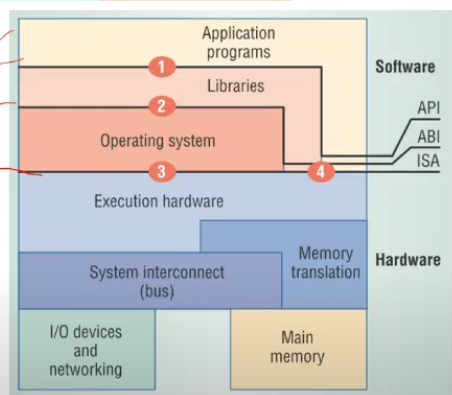
- Given a C program, it will need some resources from OS
main(){
int c = 3+2;
printf("Welcome");
}
- for printf stmt, program needs help of OS, bcz resource chahiye usko
- Interface numbers defined (1,2,3,4) here
- 1 = API, language offers some libraries
- C me printf, scanf
- Java me Scanner, Writer etc etc
- 2 = System call interface (ABI = Application binary interface)
- unique to particular os and h/w
- linux ka alag, windows ka alag
- languages maintain same API but abi diff hota acc to h/w
fopen() in (1) converts to open() in (2)
- 3,4 = ISA = Instructions et architecture
- unoique to given h/w
- eg intel processors ka x86, x64 ISA, Arm processors ka alag
- ISA comes in 2 flavors of instructions
- System Level ISA(3)
- User Level ISA(4)
- Difference?
- dekh user mdoe ya kernel mode hoga CPU ka
- accordingly user mode me User ISA hi execte kar sakta
- Kernel mode me I can use both

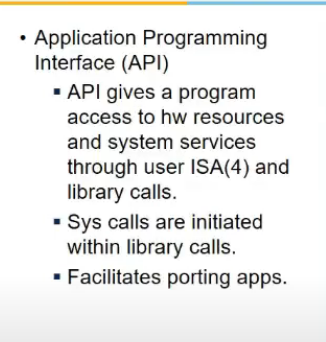
- A process executing expects ABI to remain same everytime it is executed
- so agar ABi maintain karli, toh kabhi bhi, kahi bhi chala payunga,emulate kar payunga
- agar ek process VM can provides Windows ABI using Linux ABI, then karlega woh
- Os expects ISA to remain same everytime, so agar new ISA pe jyaada, then ISA ko emulate karna padega = System VM
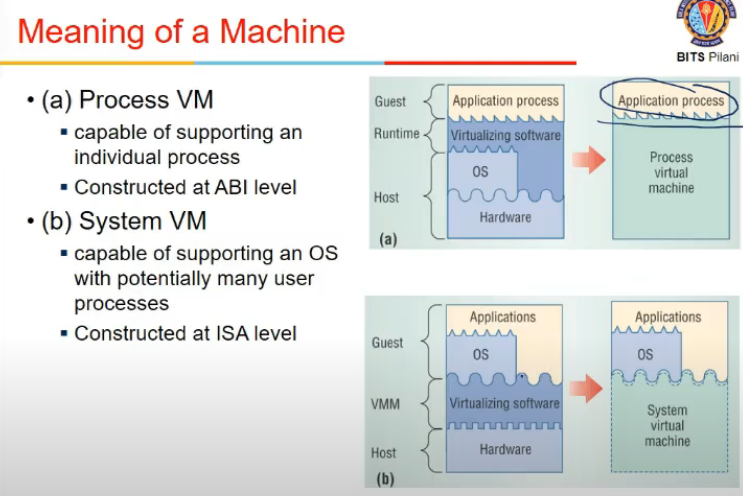
Process and System VM
- process wali executed one process at a time. So jab 1 process starts vm starts, process exits, vm too
- system vm support entire os, many process running on top of os
- virtualization is b/w host h/w and guest os
- isa maybe diff or same
- if same, h/w resources ko vitualize karna padega
- mulitple os run kar rahe honge na, so fair chance mile sabko and security issue etc etc potato patato
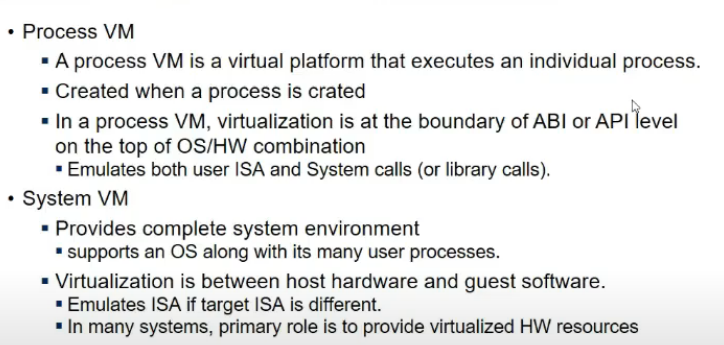
Process VM - Applicaitons

- provides virtual ABI environment
- can provide
- replication
- os, har process ke lie logical asddress space deta etc, wohi
- emulation
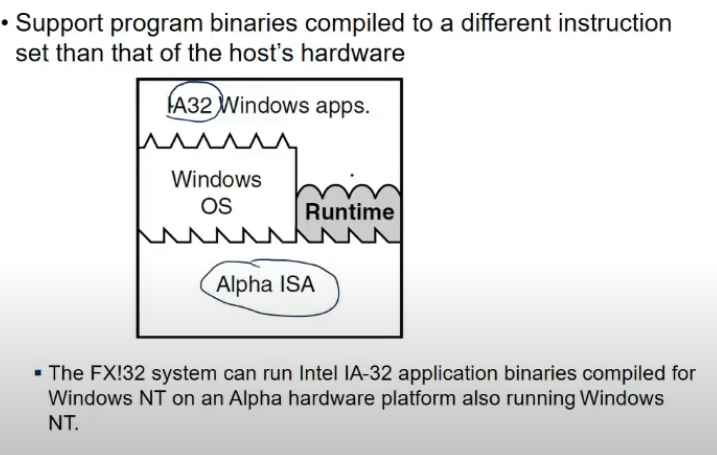
- compiler for one ISA, and running on diff ISA, translating instructions from one ISA to other(target platform)
- provided using 2 ways
- interpretation
- mapping form one ISA to other may not be 1-1
- it has subroutine for every opcode
- so startup is faster interpretation is slow
- binary translation
- trnaslae before u execute
- say kuch instructions hai, ek jump bhi hai usme
- jump ki wajah se static translation is not possible, it need to be dynamic
- so static is not always possible
- here we take one block of code, translate and execute it
- go to new block, and execute
- here use branch prediction etc etc
- startup slow, interpretation faster
- VMMS generally use this
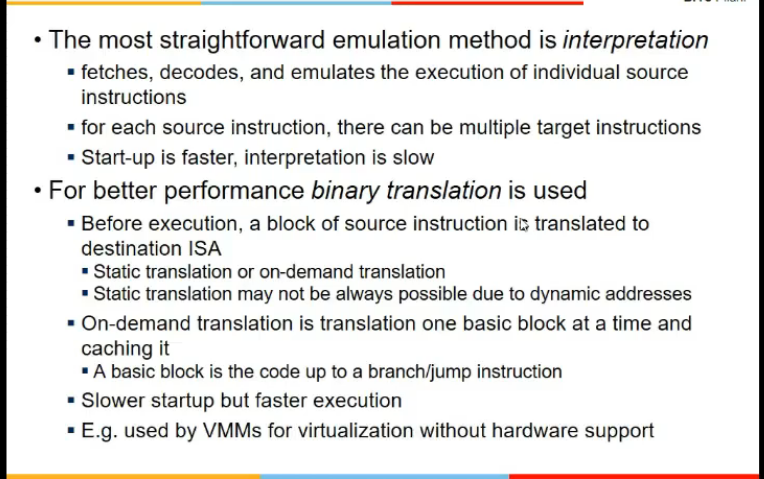
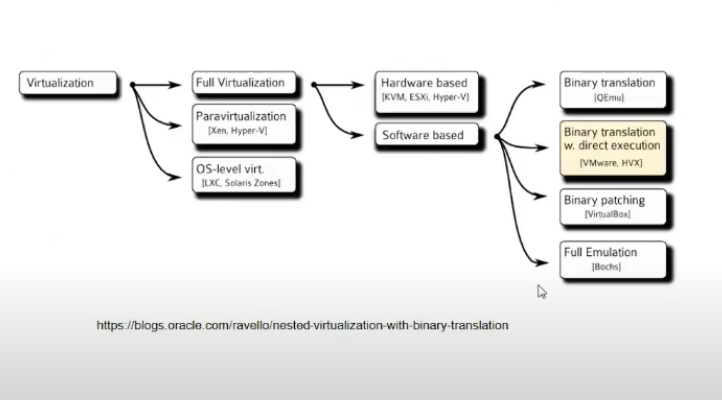
- optimization
- code faster execute ho toh compiler karta kuch kuch
- loop ko dekhke kuch kuch
- kuch optimizations dynamic bhi hote
- while executing instructions find btr ways
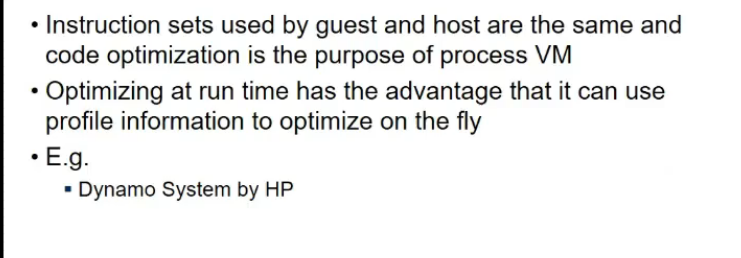
High Level Virtual Machines
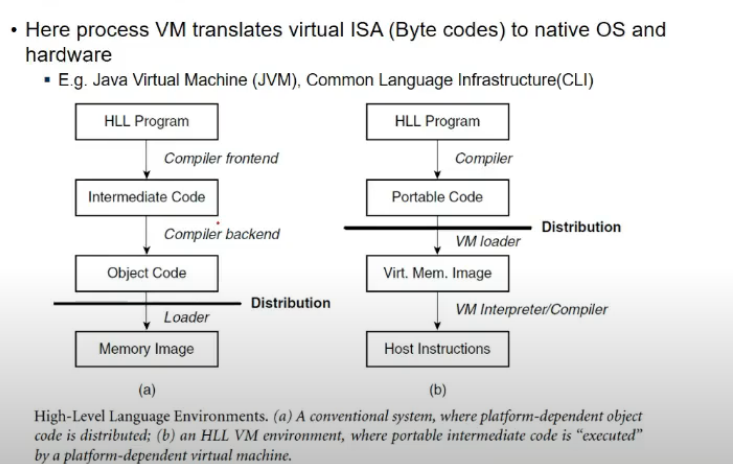
- provide complete system
- JVM, compiles and translates into intermediate code (byte code)
- executes onm JVM, byte code translates into machine code
- it is not a h/w interface
- iti s defined such that java translates code for this VM
- then JVM has to translate it for ABI
- it is a process VM, emulates ABI
Sytstem VM
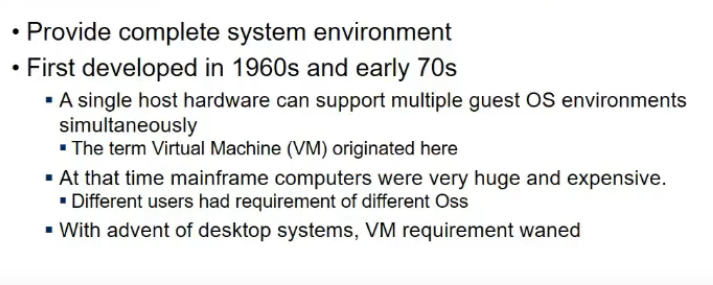
- At ISA level
- running multiple os on single h/w
- mainframe h/w bahut mehnga tha, and us time karte the yeh, multiple os emulate on single h/w
- guest os does not know about VMM sitting in b/w
- VMM should be designe din such a way

VM Taxonomy
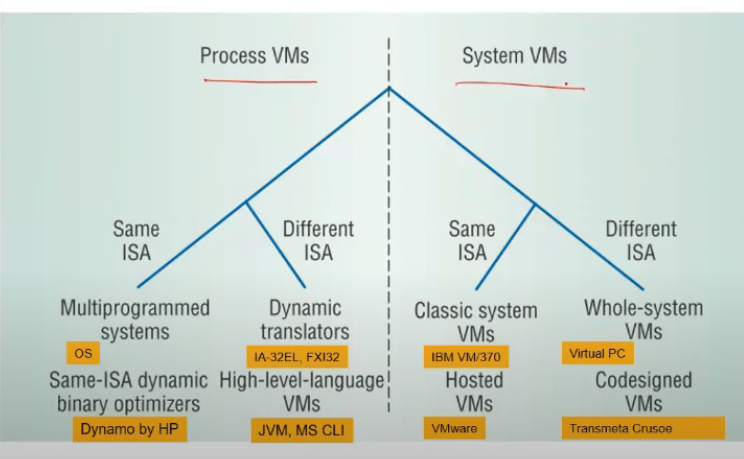
- whole system VMs
- Hosted VMs
- run on top of OS and support mltiple instructions













